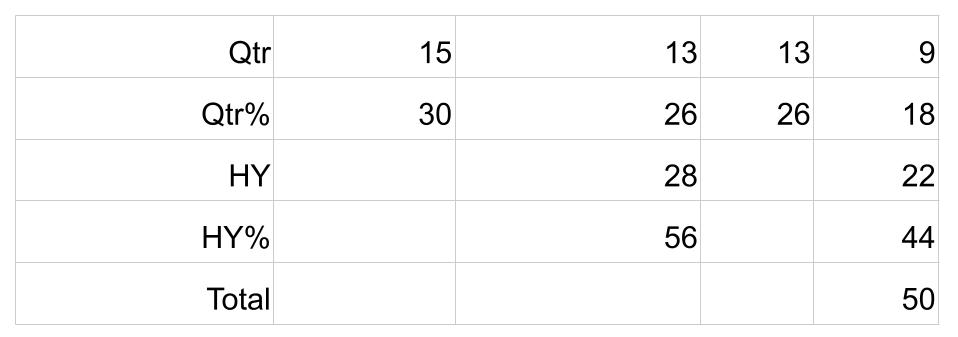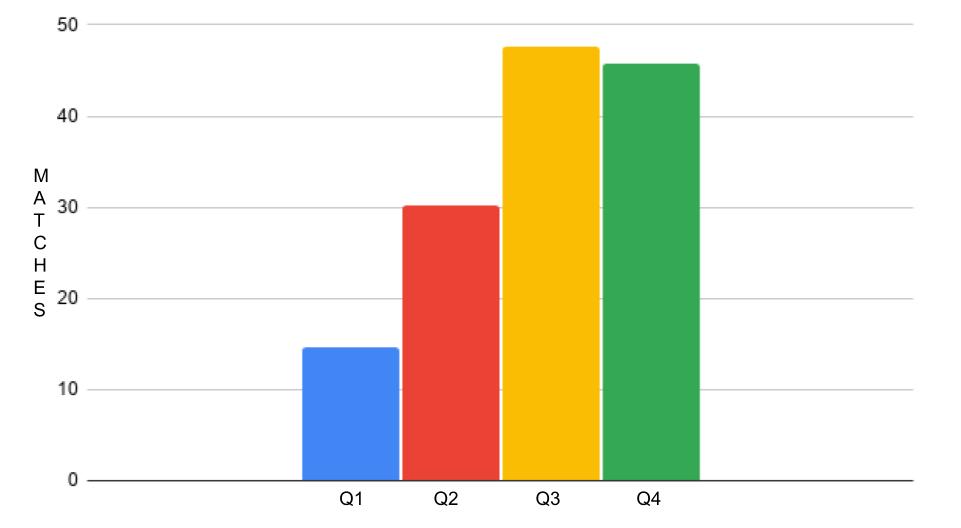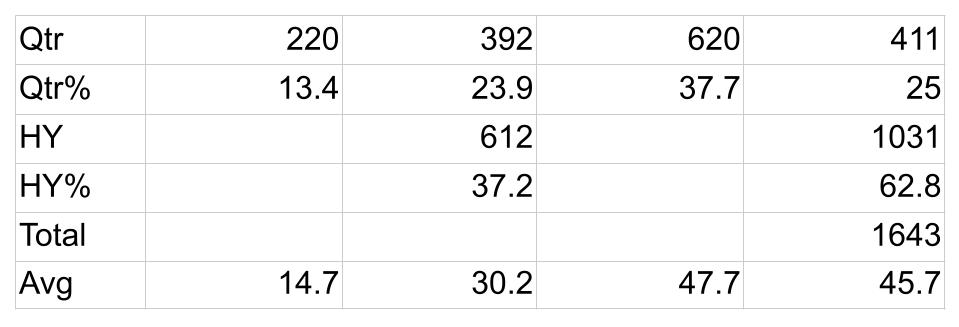Why do later born players have longer careers for England Women in T20 cricket?
In T20 cricket we select slightly more early born England Women yet late borns have careers almost twice as long.
In general there is a Relative Age Effect in women’s sport pathways but it is often less significant than in men’s sport. A small RAE is found in the England Women’s T20 team (Q1 30%, Q4 18%) over the period 2004-2021*.

But when we look at how many games these players play over a career a different picture emerges. On average Q4 players play 45.7 matches whereas Q1 play only 14.7. The return for Q2 players is slightly better at 30.2 but is overshadowed by Q3 at 47.7. So later born (Q3/Q4) play for longer than early born (Q1/Q2).


Similar results are found in the England Womens ODI (50 over) team. On average a Q1 career consists of 18 matches whereas Q4 play almost 3 times that figure at 52. There appears to be a familiar Q1/Q2 v Q3/Q4 effect.

RAE Reversals
In men’s cricket similar RAE Reversals have been shown where later borns, although selected far less, actually reach higher levels within the game. To explain this Collins, McCarthy & Court (2016) described an Underdog Effect in cricket as well as rugby union. They proposed that younger, smaller, weaker, players have to work harder to survive than their relatively older counterparts and consequently become better players eventually.
It is important to state that it is not clear if Relative Age and Underdog Effects work to the same extent in the women’s pathway as the mens.
For the T20 Women’s team the lowest number of matches played by a Q4 is currently 12. There are 11 Q1/Q2s who played fewer than 5 matches over their careers. Perhaps we overselect Q1 in the pathway only for a proportion of those players to not ‘make it’, while nearly all of the Q4 players do?
NOTES
* as at 8/3/2021
Players n=50
Selections n=1643
Source = espncricinfo.com